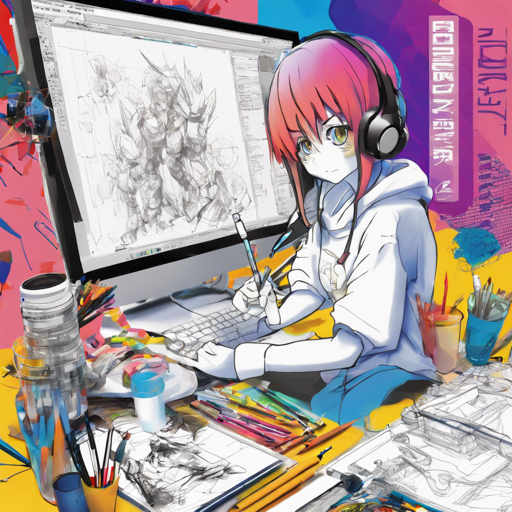Welcome, aspiring artists and tech enthusiasts! If you’re looking to transform your anime art or manga into beautiful line sketches, look no further than Anime2Sketch. This powerful sketch extractor leverages cutting-edge technology to take illustrations to the next level. In this blog post, we’ll guide you step-by-step on how to set up and use Anime2Sketch, while sharing some troubleshooting tips along the way.
What is Anime2Sketch?
Anime2Sketch is an innovative project designed for extracting sketches from illustration, anime art, and manga. Developed using advanced machine learning techniques, this tool allows you to create stunning line arts with minimal effort. Think of it as your personal art assistant, capable of converting your detailed images into clean sketches, much like turning a rough draft into a polished masterpiece.
Prerequisites: Setting Up Your Environment
Before diving into the installation, ensure your system meets the following prerequisites:
- Operating System: Linux or macOS
- Python 3 (recommended to use Anaconda)
- CPU or NVIDIA GPU + CUDA CuDNN
- Required Packages: Pillow, PyTorch
Step 1: Installation
Begin by installing the necessary packages to get Anime2Sketch up and running. Execute the following command in your terminal:
pip install -r requirements.txtStep 2: Download Pretrained Weights
Next, you’ll need to download the pretrained weights:
- Regular Model: Google Drive
- Artifact-Free Model (for low contrast images): Google Drive
Be sure to place these weights in the ‘weights’ folder within your project directory.
Step 3: Testing the Model
Run the test script by using the command below. This command includes three important arguments:
- dataroot: Specify your test file or directory.
- load_size: The input image will be resized To manage memory constraints (default size is 512×512).
- output_dir: The directory where your output sketches will be saved.
python3 test.py --dataroot your_inputdir --load_size 512 --output_dir your_outputdirFor an example scenario, you can use:
python3 test.py --dataroot test_samples/madoka.jpg --load_size 512 --output_dir resultsStep 4: Running with Docker
If you prefer a Docker setup, you can customize your input and output images directory effortlessly:
- To build the Docker image, run:
make docker-builddocker run -it --rm --gpus all -v pwd:workspace -v your_input_dir:input -v your_output_dir:output anime2sketchTroubleshooting
If you encounter any issues while using Anime2Sketch, here are some troubleshooting steps to consider:
- Ensure all prerequisites are correctly installed.
- Double-check the paths for your input and output directories.
- If you see a memory error, consider reducing the load_size parameter.
- For any technical inquiries, feel free to leave questions as issues in the repository.
For more insights, updates, or to collaborate on AI development projects, stay connected with fxis.ai.
Final Thoughts
At fxis.ai, we believe that such advancements are crucial for the future of AI, as they enable more comprehensive and effective solutions. Our team is continually exploring new methodologies to push the envelope in artificial intelligence, ensuring that our clients benefit from the latest technological innovations.
Now that you’re equipped with this guide, get ready to create mesmerizing sketches from your anime arts and manga! Happy sketching!

